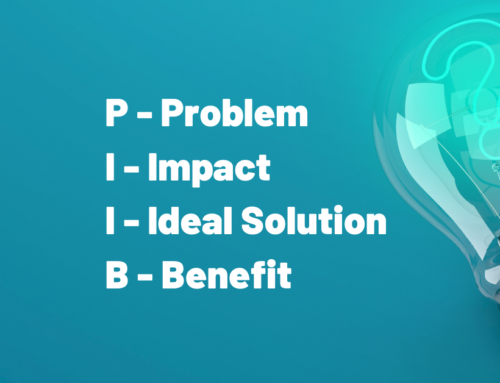The Problem: You Need an ERP for Distribution That Can Handle Your Unique Needs
If you’re a wholesale distributor who carries like products with only slight variations in size, style, and other attributes, things can get confusing quickly. Small variations can results in hundreds, or even thousands, of combinations of unique items. You may quickly find yourself struggling to manage this wide diversity of SKUs. It can be difficult to tell products apart during order entry, picking, and other activities. It can also be equally challenging to manage costs, pricing, and other details with so many similar products.
The Solution: Acumatica Cloud ERP – Distribution Edition
These 5 features included in the Acumatica Cloud ERP – Distribution Edition simplify item creation, long-term item management, purchasing, and sales processes. It’s the only ERP for distribution you’ll ever need.
1. Matrix – Use attributes to maximize flexibility
You can automate and streamline your item creation, sales, and purchasing processes with Acumatica matrix items – a master SKU or template that can be accompanied by attributes. Each attribute has options that define the characteristics of the unique inventory item. Examples include:
- Size or Dimension
- Material or Grade
- Product Composition
- Color or Style
- Manufacturer or Model Year
- Packaging
The Templates feature allows you to expedite item creation using a default value for order fulfillment, purchasing, stocking, and general ledger settings. You can mask part numbers using attribute values, a fixed number of characters for each item segment, and separators such as dashes. This process creates “smart part numbers.” These numbers are designed to be meaningful, unique, and easy to find. You can also remove unavailable combinations before item creation.
2. Kitting & Disassembly – Create kits with advanced disassembly features
Across a wide variety of industries, distributors manage kits – a selection of products that are assembled, stocked, and sold together. You may preassemble kits to stock for order fulfillment. Otherwise, you might sell the kit and pick the components during the order fulfillment process. Non-stock items may also be included in kits to accommodate labor, instructions, or manuals, to name a few examples.
Sometimes the creation of a kit comes as a result of disassembling another unit, instead of assembling something new. When disassembling, you run the risk in losing or damaging kit components.
Acumatica has the ability to manage the assembly and disassembly of kits, instead of it being a process that might have otherwise taken place offline.
3. Serial and Lot Traceability – Manage recalls and quality control
In the event products need to be replaced or serviced due to recalls or warranty, it’s critical to have serialized inventory. Easily manage manufacturer warranties and recalls with the perfect ERP for distribution.
Lot tracking improves compliance with industry and customer quality requirements. Acumatica captures serial and lot numbers during the receipt of goods process or sales order entry to identify which serial numbers were included in the customer order. In some cases, serial and lot tracking is required to identify components assembled in kits.
4. Unit of Measure – Variable Units of Measure with User-Defined Conversions
Distributors – tell us if this sounds like a familiar scenario. You purchase something in one unit of measure, stock in another unit of measure, and sell in yet another unit of measure.
For example, a beverage distributor may buy inventory by the case, stock by the unit, and sell in six- and twelve-packs. An agricultural products distributor might buy pesticides in 20-gallon drums and repack in 16-ounce bottles for resale.
Unit of measure management is also useful for kitting and disassembly. A distributor may use kitting to create larger containers of products for bulk orders. Conversely, they may disassemble larger packages into smaller quantities to create unique SKUs or to fulfill demand when they are out of stock for smaller packages to avoid costly backorders or rush orders from vendors.
With Acumatica’s Distribution Edition, you don’t have to worry about conversion confusion.
5. Expiration Dates – FEFO picking and stock rotation
For distributors of perishable goods, inventory needs to be managed using expiration dates, along with lot or serial numbers. Expiration date tracking can be used during order fulfillment to pick items that are closest to their expiration date.
The process of choosing items by their expiration date is known as FEFO, or first-expired, first-out. It limits risk and exposure for distributors of perishable inventory improving turns, lowering costs, and increasing profitability.
Being able to identify products by expiration date is also helpful when you want to test for quality for products nearing their dates. Expiration dates can also improve stock rotation and encourage moving older stock to the front of shelves for picking.
Ready to make your life easier with an ERP for Distribution that tends to your most urgent needs?
The Acumatica Cloud ERP – Distribution Edition makes complex item management easy with matrix items, kitting and disassembly, lot and serial traceability, flexible unit of measure conversions, and expiration dates, to name a few.
The goal is to help you reduce your shipping and carrying costs, minimize write-offs for spoilage or obsolescence, and increase sales with integrative commerce. If you’re looking to offer a competitive advantage with lower prices, higher profits, and on-time shipments, you need an ERP for distribution that does the heavy lifting for you. Acumatica’s Distribution Edition includes everything you need to grow your business without sacrificing on an exceptional customer experience.




